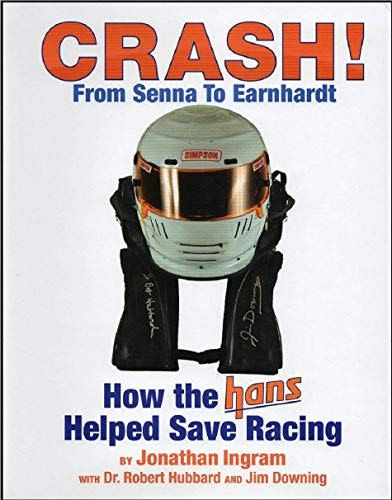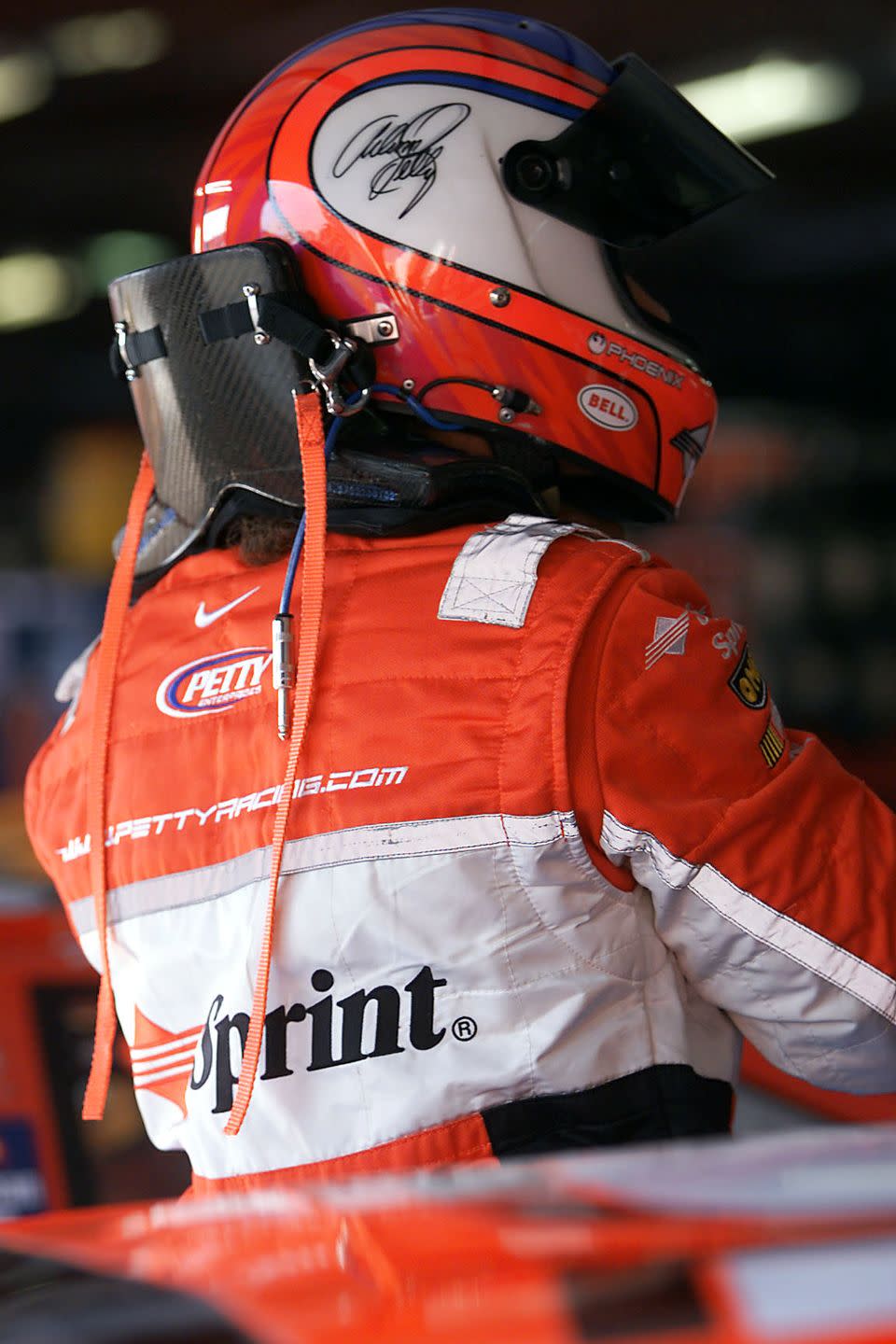How the HANS Device Flipped the Script on the Safety Narrative in 2000

"Hearst Magazines and Yahoo may earn commission or revenue on some items through these links."
Invented by Dr. Robert Hubbard and promoted by him and business partner Jim Downing, a five-time IMSA champion, the HANS was designed to prevent the basal skull fractures.
Brett Bodine started wearing the unit in NASCAR in 2000 after driver deaths of Adam Petty and Kenny Irwin.
Bodine was one of five drivers who wore a HANS in the fateful 2001 Daytona 500.
Following the death of NASCAR drivers Adam Petty and Kenny Irwin during the 2000 season, Brett Bodine was committed to wearing a HANS Device.

Bodine sawed off the headrest on his seat to fit the device for some trial laps during a NASCAR-sanctioned test at the Indianapolis Motor Speedway, where teams had been invited to prepare for upcoming Cup races on the relatively flat 2.5-mile tracks at Indy and Pocono. By time he got to Pocono, Bodine had properly fit the head restraint into his cockpit and was ready to go. What he was not ready for was the reception by his fellow Cup drivers.
“When I got to Pocono, everybody was calling me names,” he said. “Things like pansy and sissy. People were asking me, ‘What do you want to use something like that for?’”
Invented by Dr. Robert Hubbard and promoted by him and business partner Jim Downing, a five-time IMSA champion, the HANS was designed to prevent the basal skull fractures that had killed Busch Series driver Petty and Cup driver Irwin in practice crashes at the New Hampshire oval just two months apart.

Bodine, who earned an engineering degree from the State University of New York, respected the principles behind the device. In frontal crashes, it prevented sometimes fatal excursions of a helmeted head by transferring the energy through its two tethers to a carbon fiber collar, then into the torso.
“We needed to improve safety,” said Bodine. “Regardless if people pointed and called you names, you had to step up and say this was the right thing to do. The longer I stuck it out, the more people came up to me and said, ‘OK, what’s the deal?’” That interest was heightened by the death of Tony Roper from a basal skull fracture in a Truck series race at the Texas Motor Speedway that fall.
Bodine was one of five drivers who wore a HANS in the following year’s Daytona 500. Like many drivers, Dale Earnhardt resisted the strange new device, but was more aggressive in speaking out against the need for improved safety.

"CRASH! From Senna to Earnhardt -- How the HANS Helped Save Racing"
$39.95
amazon.com
amazon.com"Tie kerosene rags around your ankles so ants don’t crawl up and eat your candy ass,” said the Intimidator. Before the race, Earnhardt visited the motor home of friend Dale Jarrett, another who would wear the HANS, to inquire about the strange new device. But he remained reluctant to use it, a pattern among star drivers in all major series.
Bill Elliott was one of the many who decided not to wear a HANS for that year’s 500, in part because his Ray Evernham team ran out of time trying to modify his seat for a proper fit. But following the death of Earnhardt on the last lap from a basal skull fracture, “He was wearing one at the next race at Rockingham,” said Evernham.
By time the Cup Series returned to Daytona for its July race, just over half the Cup drivers were using a HANS. In the fall of 2001, NASCAR mandated head restraints for Cup drivers prior to the race at Talladega, including the imitative Hutchens device introduced by Safety Solutions owner Trevor Ashline that used straps and no carbon collar. That device was eventually banned after John Baker was killed by a basal skull fracture while wearing a Hutchens in a crash at the Irwindale, Calif. track during a NASCAR Southwest series race in 2002 and points leader Sterling Marlin suffered a neck fracture while wearing one in a Cup race at Richmond.
Adam Petty’s father Kyle was among the five who wore a HANS in the 2001 Daytona 500. Ironically, he was the first driver to wear a HANS in NASCAR competition in the early 1990s, albeit the earlier Model I that had three tethers and a large wrap-around collar.

While driving for Felix Sabates, Petty wore the bulky Model I in Rockingham races to help support his neck over the course of 500 miles on the steeply banked track. He was interested in the Head And Neck Support behind the acronym HANS.
“I had wrecked a lot of times and had pain in my neck,” said Petty. “It was about trying to slow some of that stuff down. A head injury never crossed my mind.” The increasing emphasis on aerodynamics meant smaller window openings and Petty gave up using the HANS due to problems getting out of the car quickly.
Bulk was always a problem with the wrap-around Model I. Developed in 1997 using sled testing followed by trials with CART drivers, the smaller two-tether HANS introduced to NASCAR at the Indy test in 2000 remains the standard for head restraints around the world.

 Yahoo Autos
Yahoo Autos